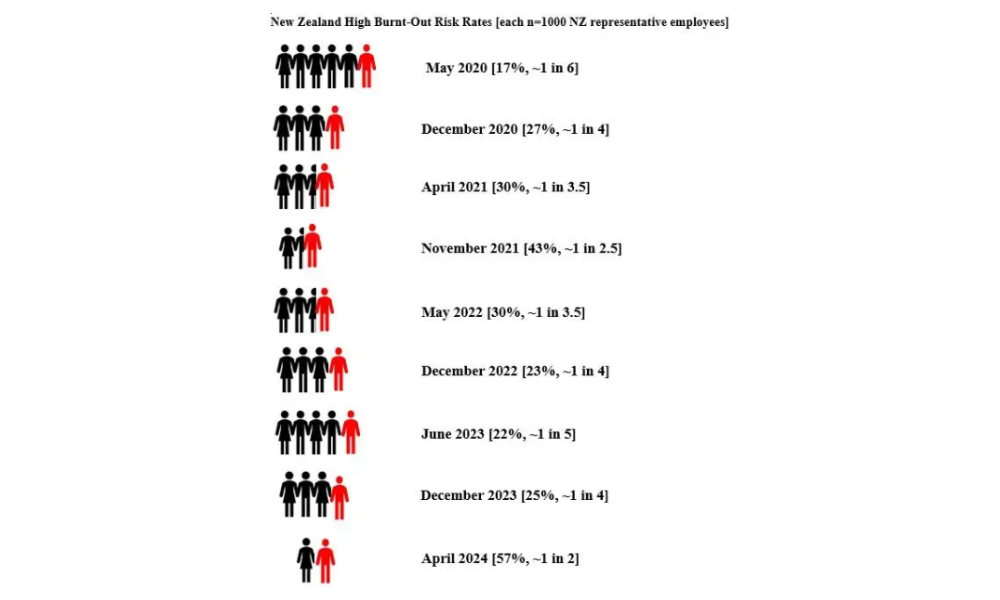
Aotearoa New Zealand workforce driven to highest burnout risk by job insecurity

One in two employees in New Zealand now fall within the high burnout risk category, according to new research.
The burnout risk has doubled from the December 2023 rate of 25 per cent and exceeded the previous highest rate of 44 per cent in November 2021, according to Jarrod Haar, professor at Massey Business School.
The doubling of burnout risk across the general workforce comes primarily from the increase in job insecurity and is a critical and dangerous issue for individuals and employers, he said.
“Those who perceive their job as most under threat have increased from 22 per cent in December 2023 to 48.4 per cent in April 2024. The changed job market has truly struck the workforce, and those in the high job insecurity group are 14.5 times more likely to be in the burnout risk group. The workforce is feeling massive strain due to the fear of job losses, leading to incredibly high levels of job burnout.”

Those in the burnout risk category are far more likely to experience mental health issues like anxiety and depression, as well as higher levels of insomnia, Haar said.
“Employers should also be concerned, as burnt-out workers are 16.5 times more likely to seriously consider quitting their job. They are also 28.5 times more likely to engage in poor work behaviours often, including slacking off and not trying. Both of these issues can translate into high costs for employers.”
The research shows that different industries in New Zealand are experiencing different levels of burnout, with the highest rate reported among clerical workers. In comparison, business professionals reported the lowest burnout rate.
Highest burnout rates:
Lowest burnout rates:
The research also found differences in burnout levels across regions. The South Island reported the lowest numbers (Nelson at 14.3 per cent and the West Coast and Otago both at 33.3 per cent), while Gisborne reported the highest at 81.1 per cent.
There were also differences based on working environment, with full-time remote workers reporting the lowest levels (15.4 per cent), followed by full-time office workers (31.8 per cent). Hybrid workers reported the highest productivity levels but also the highest burnout rate at 72.4 per cent.